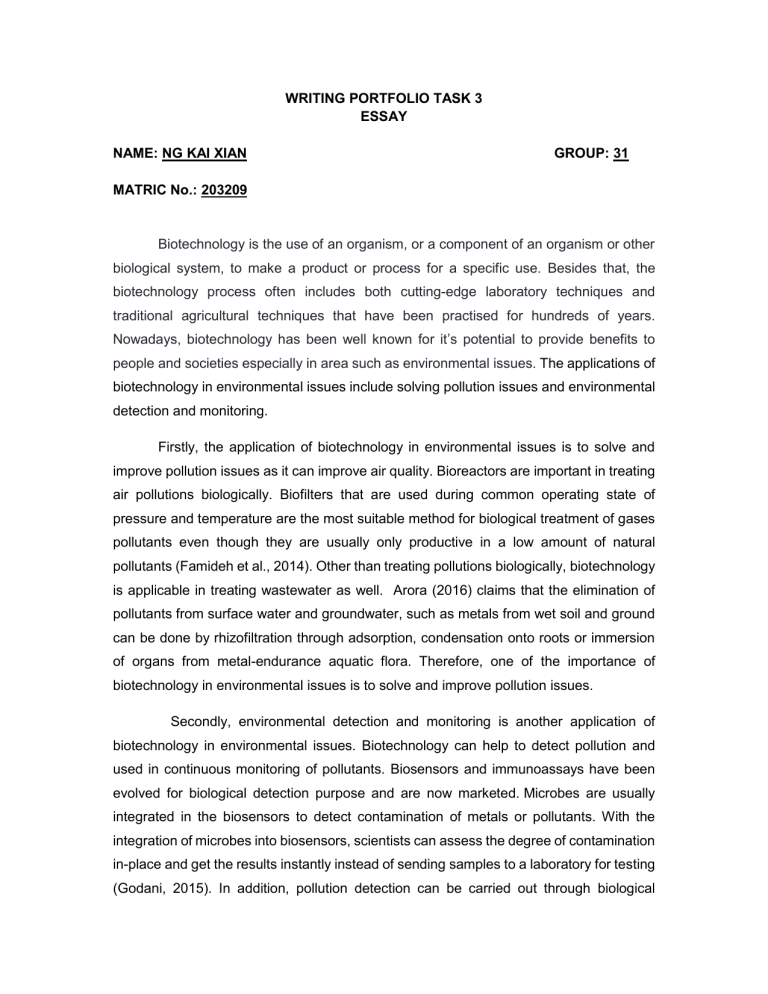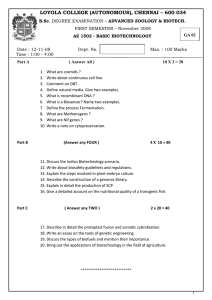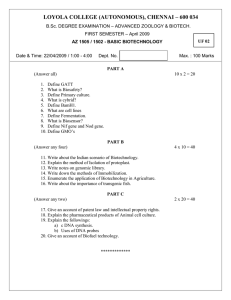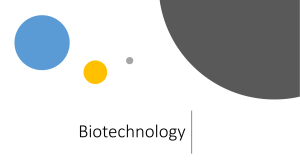
WRITING PORTFOLIO TASK 3 ESSAY NAME: NG KAI XIAN GROUP: 31 MATRIC No.: 203209 Biotechnology is the use of an organism, or a component of an organism or other biological system, to make a product or process for a specific use. Besides that, the biotechnology process often includes both cutting-edge laboratory techniques and traditional agricultural techniques that have been practised for hundreds of years. Nowadays, biotechnology has been well known for it’s potential to provide benefits to people and societies especially in area such as environmental issues. The applications of biotechnology in environmental issues include solving pollution issues and environmental detection and monitoring. Firstly, the application of biotechnology in environmental issues is to solve and improve pollution issues as it can improve air quality. Bioreactors are important in treating air pollutions biologically. Biofilters that are used during common operating state of pressure and temperature are the most suitable method for biological treatment of gases pollutants even though they are usually only productive in a low amount of natural pollutants (Famideh et al., 2014). Other than treating pollutions biologically, biotechnology is applicable in treating wastewater as well. Arora (2016) claims that the elimination of pollutants from surface water and groundwater, such as metals from wet soil and ground can be done by rhizofiltration through adsorption, condensation onto roots or immersion of organs from metal-endurance aquatic flora. Therefore, one of the importance of biotechnology in environmental issues is to solve and improve pollution issues. Secondly, environmental detection and monitoring is another application of biotechnology in environmental issues. Biotechnology can help to detect pollution and used in continuous monitoring of pollutants. Biosensors and immunoassays have been evolved for biological detection purpose and are now marketed. Microbes are usually integrated in the biosensors to detect contamination of metals or pollutants. With the integration of microbes into biosensors, scientists can assess the degree of contamination in-place and get the results instantly instead of sending samples to a laboratory for testing (Godani, 2015). In addition, pollution detection can be carried out through biological detection methods using biosensors and immunoassays. Scragg (2005) claims that physico-chemical transducer has been incorporated for the enhancement of biosensors which involves the combination of a particular and sensitive derived detecting component. Hence, environmental detection and monitoring is one of the applications of biotechnology in environmental issues. In conclusion, the application of biotechnology provides the researchers with new knowledge and tools that make the jobs more efficient and easy. For example, biotechnology can be applied in the environment area to solve and improve pollution issues, as well as to monitor and detect the environment condition. Therefore, biotechnology-based research can be seen as a more precise extension of conventional approaches and probably be developed in the near future.




